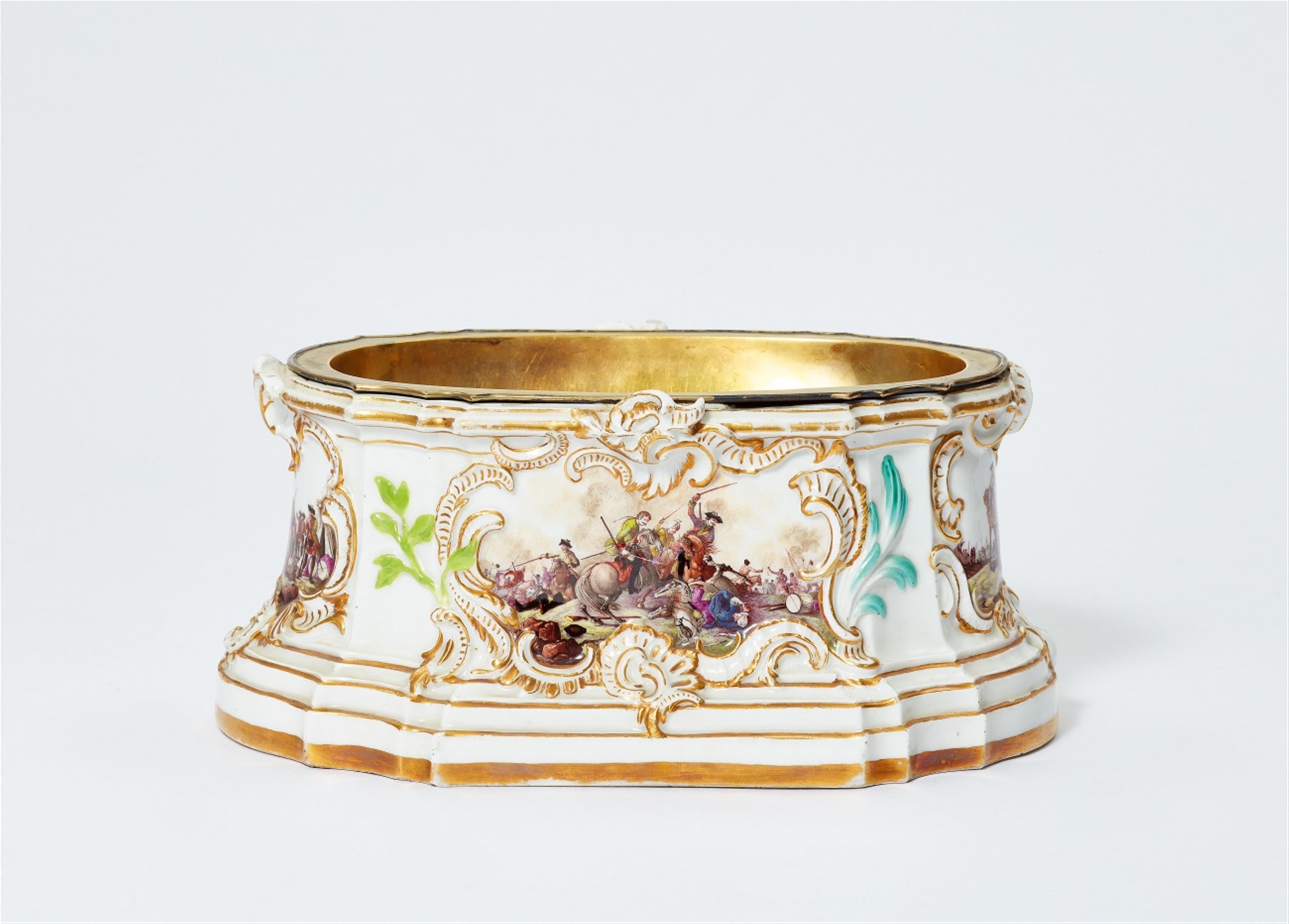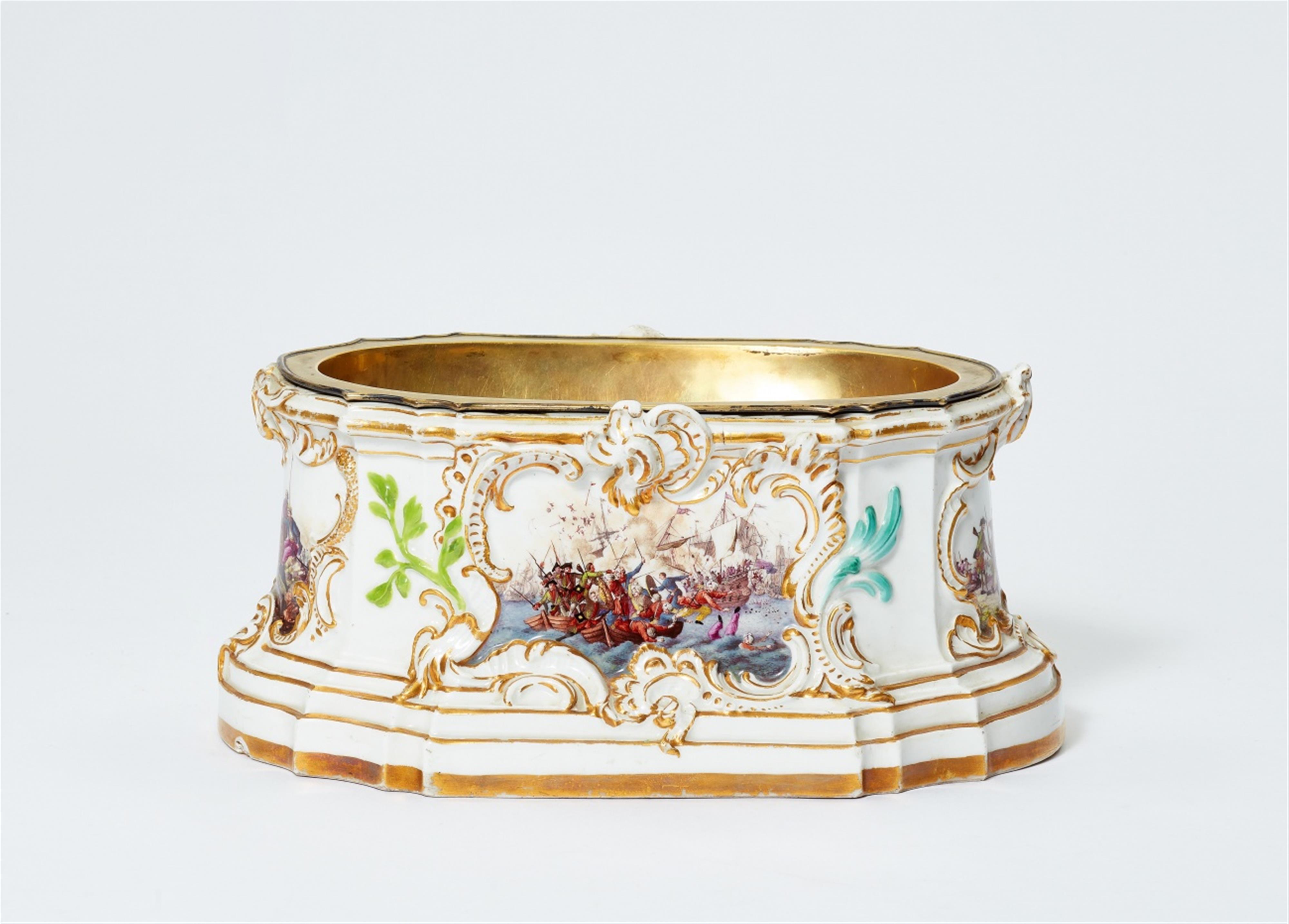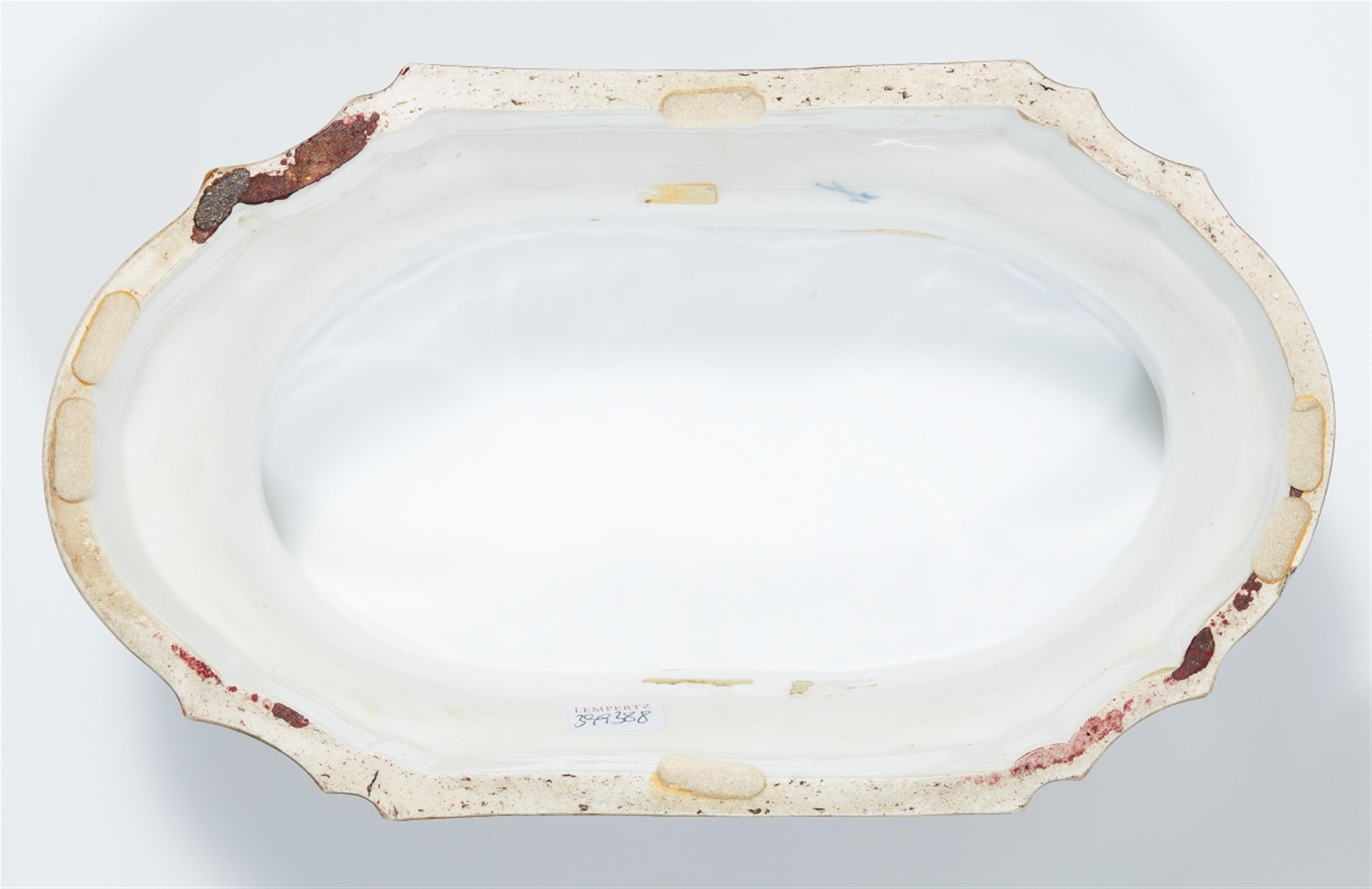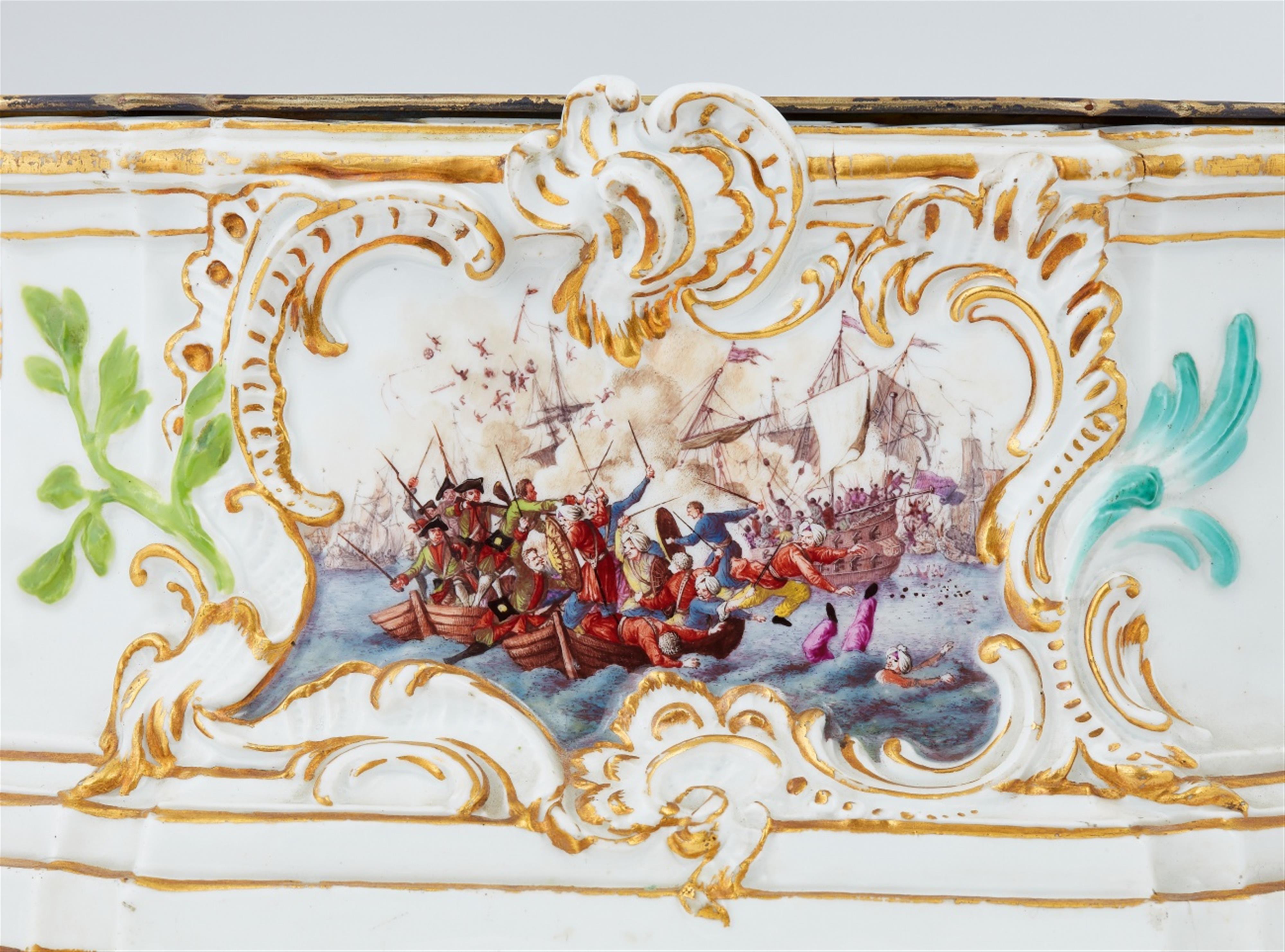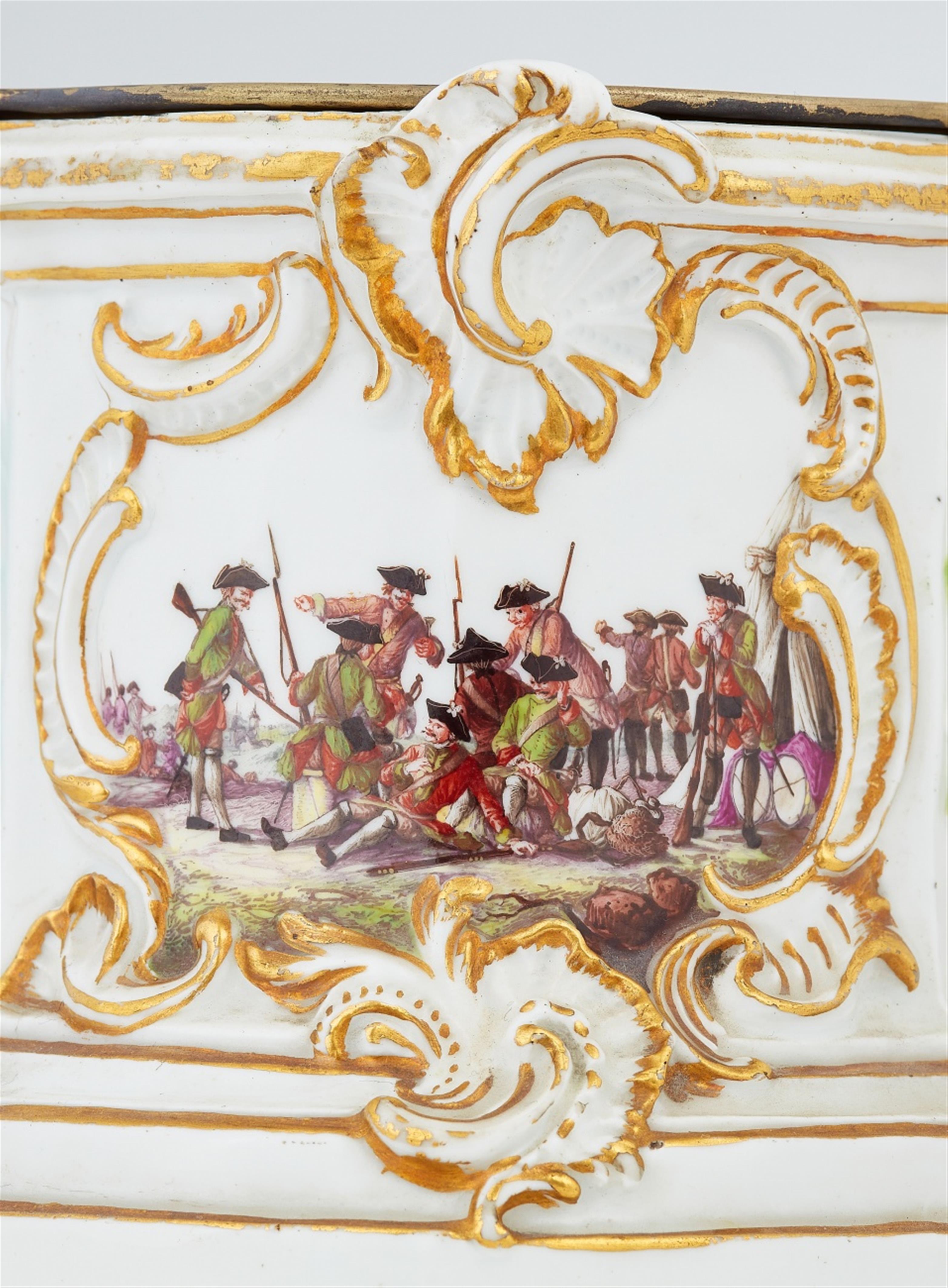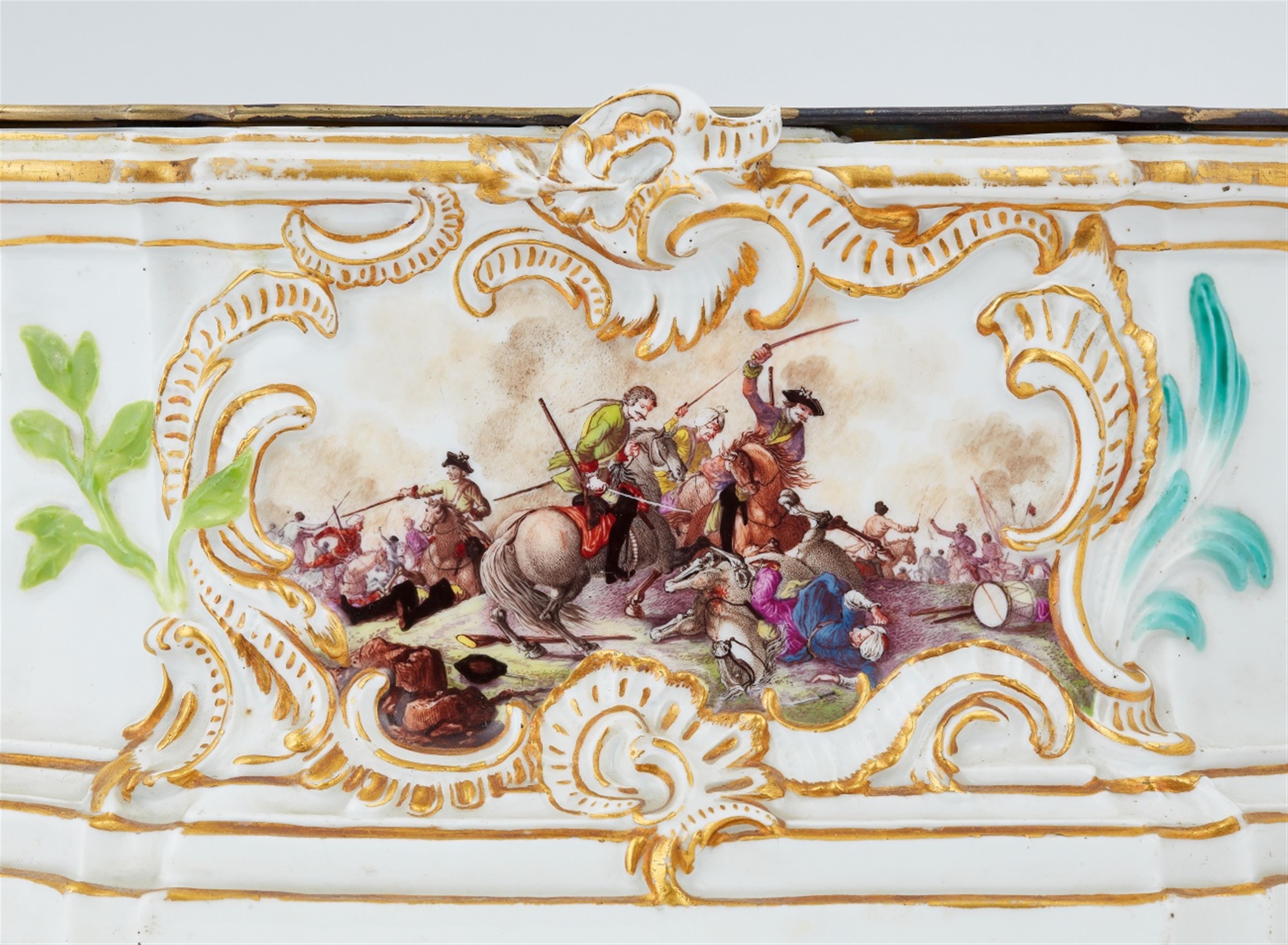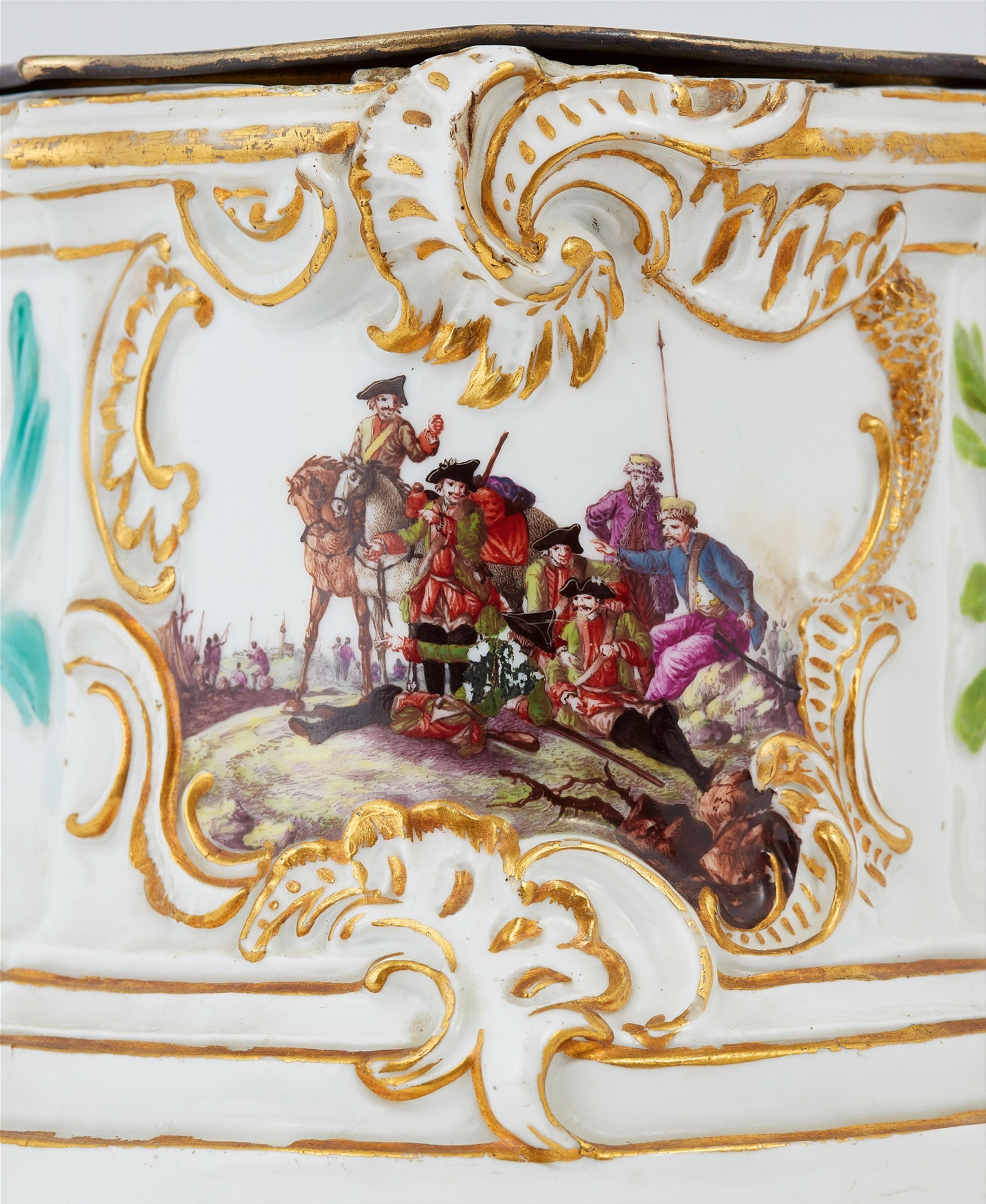A Meissen porcelain bracket with battle scenes
Stepped pedestal with rounded edges and four rocaille cartouche motifs in relief painted with detailed land and naval battle scenes, the sides with soldiers at rest. Blue crossed swords mark. Wear to the edges. With a later silver gilt dish insert. H 11, W 24.7 cm.
Mid-18th C.
It seems astonishing that a porcelain painter's repertoire would include such realistic and brutal battle scenes, but warfare was considered a courtly art. Battles were an almost everyday occurrence, or at least a vivid memory, for many of the Meissen manufactory's patrons. Meissen not only developed their own formal vocabulary, but also translated painted motifs to porcelain. The genre was heavily influenced by Jacques Callot's engravings from the Thirty Years' War, and was continued by Philips Wouwerman and Georg Philipp Rugendas. In the manufactory, their engravings functioned as prototypes for the designs of painters such as Philipp Ernst Schindler, Johann George Heintze and Bonaventura Häuer and their scope far outreached the usual expectations on porcelain tablewares to form "conversation pieces". This bracket may have been used as a stand for a porcelain clock or a group of allegorical figures. It would have been an object designed to evoke a sense of "memento mori", inviting the viewer to consider the transience of life and question their own actions.
Provenance
Christie's London, 17th October 1977, lot 170.
Acquired from Christie's London, 28th March 1983, lot 138.
Literature
Illus. in cat.: Blütenlese. Meißener Porzellan aus der Sammlung Tono Dreßen, Munich 2018, p. 135, no. 93.

